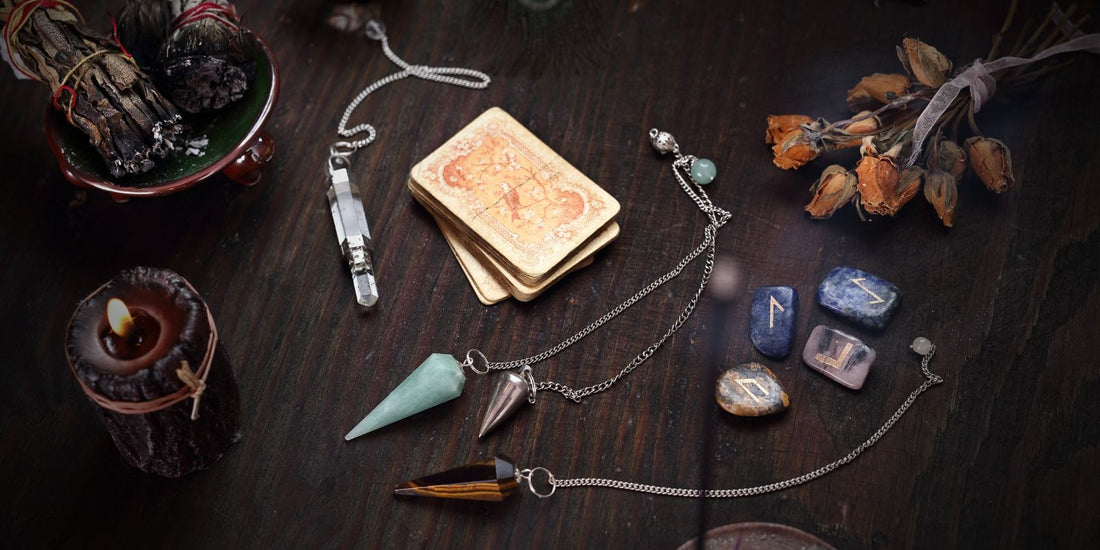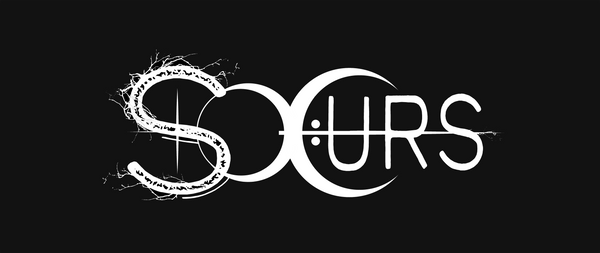
The Divinatory Pendulum: Why and How to Use It?
The divinatory pendulum is a fascinating and powerful tool, it has been used for centuries to answer questions, explore the unconscious and detect invisible energies. It is based on dowsing , a practice that allows you to interpret the imperceptible micro-movements of the body to access subtle information . Whether for divination, energy healing or even the search for lost objects, the pendulum opens up a vast field of possibilities. Let's discover together its uses and how it works.
Sommaire
- Dowsing: A Science of Subtle Perception
- Why Use a Divinatory Pendulum?
- How to Use Your Pendulum Properly?
Dowsing: A Science of Subtle Perception
Dowsing is the art of capturing information using tools such as pendulums or dowsing rods. This practice is based on the idea that our body is a sensitive receiver to vibrations and surrounding energy fields.
How does dowsing work?
The pendulum acts as an extension of our subconscious . When a question is asked, it amplifies the involuntary micro-movements of the hand linked to the answers recorded in our unconscious. These movements result in oscillations of the pendulum, the sense and direction of which allow us to obtain answers .
Some put forward the hypothesis of an interaction with subtle energy fields , while others see it as a manifestation of deep intuition . Whatever the explanation, dowsing is a recognized tool for refining one's sensitivity to imperceptible information.
An Ancient and Universal Practice
Dowsing has been used for thousands of years. The ancient Egyptians, the Romans and even some medieval doctors used it to detect water sources, diagnose diseases or make important decisions. Even today, this technique continues to be explored in the spiritual, medical and scientific fields, particularly in geobiology to analyze the energies of places.
Why Use a Divinatory Pendulum?
The divinatory pendulum is a great tool to better understand your environment, your emotions and your life choices. Here are some of the main reasons to adopt it.
1. Get Clear and Quick Answers
One of the most common uses of the pendulum is to find answers to closed questions (yes/no) . This allows for quick guidance in situations where intuition alone is not enough. You can ask questions about personal, professional or spiritual choices.
2. Develop your Intuition
The pendulum helps to strengthen our connection with our subconscious and our intuition. By using it regularly, we refine our perception and our ability to feel subtle energies. This practice allows us to learn to trust our inner feelings more and to distinguish what is in alignment with ourselves.
3. Detect and Harmonize Energies
The pendulum is a valuable ally to identify energy imbalances in a place, on a person or even on oneself. It can be used to:
· Test the energy of an object or crystal,
· Check the balance of the chakras and adjust the energy flows,
· Identify energy blockages or negative influences.
In medical or energetic radiesthesia, some practitioners use it to refine a diagnosis or choose the most appropriate treatment.
4. Find Lost Objects
Thanks to dowsing, the pendulum can help locate lost objects. By asking specific questions and refining searches using a dial or a map, it becomes a real trail detector.
5. Improve Decision Making
When we hesitate between several choices, the pendulum can offer a new perspective and help us make a decision in accordance with our unconscious and our intuition. This method is particularly useful when we feel blocked or indecisive.
6. Working with Maps or Grids
The pendulum can be used in addition to tarot and oracles , or specific dials to refine the answers and obtain more detailed indications. Some practices combine dowsing and tarot, numerology or astrology to provide precise insights.
How to Use Your Pendulum Properly?
1. Prepare Mentally
Before using your pendulum, it is important to be in a calm and focused state . An agitated or skeptical mind can interfere with the results. Meditation or a few deep breaths can help to center yourself before a session.
2. Define a Response Convention
Each person must establish an agreement with his pendulum. In general:
· A clockwise circular motion means “yes,”
· A circular motion in the opposite direction means “no”,
· A pendulum movement can mean "maybe" or "uncertain answer."
It is essential to test these conventions by asking questions to which the answer is already known in order to validate the reliability of the pendulum.
3. Ask Specific Questions
The pendulum works best with clear, closed questions. Avoid vague formulations and prefer direct requests:
· “Does this item belong to me?”
· “Is this decision beneficial for me?”
· “Is this place energetically balanced?”
The more specific the question, the more reliable the answer will be.
4. Interpret with Objectivity
Using the pendulum requires a certain neutrality . Our desires and expectations can unconsciously influence the answers. It is therefore essential to approach each session with an open and detached mind, without seeking to influence the results.
5. Clean and Recharge your Pendulum
Like any energy tool, the pendulum must be purified regularly to prevent it from being influenced by residual energies. It can be cleaned with:
· Incense or white sage ,
· Exposure to moonlight or sunlight,
· A passage under running water (if the material of the pendulum allows it).
Recharging can also be done by placing it on a selenite plate or a flower of life.
The divinatory pendulum is a fascinating tool that allows you to explore areas as varied as divination , object research and energy balancing. Its use is based on dowsing, a subtle practice that highlights our connection with the invisible. By refining your practice and trusting your intuition, you will discover a powerful and accessible tool to guide your path.
👉 To learn more about How to choose your pendulum
